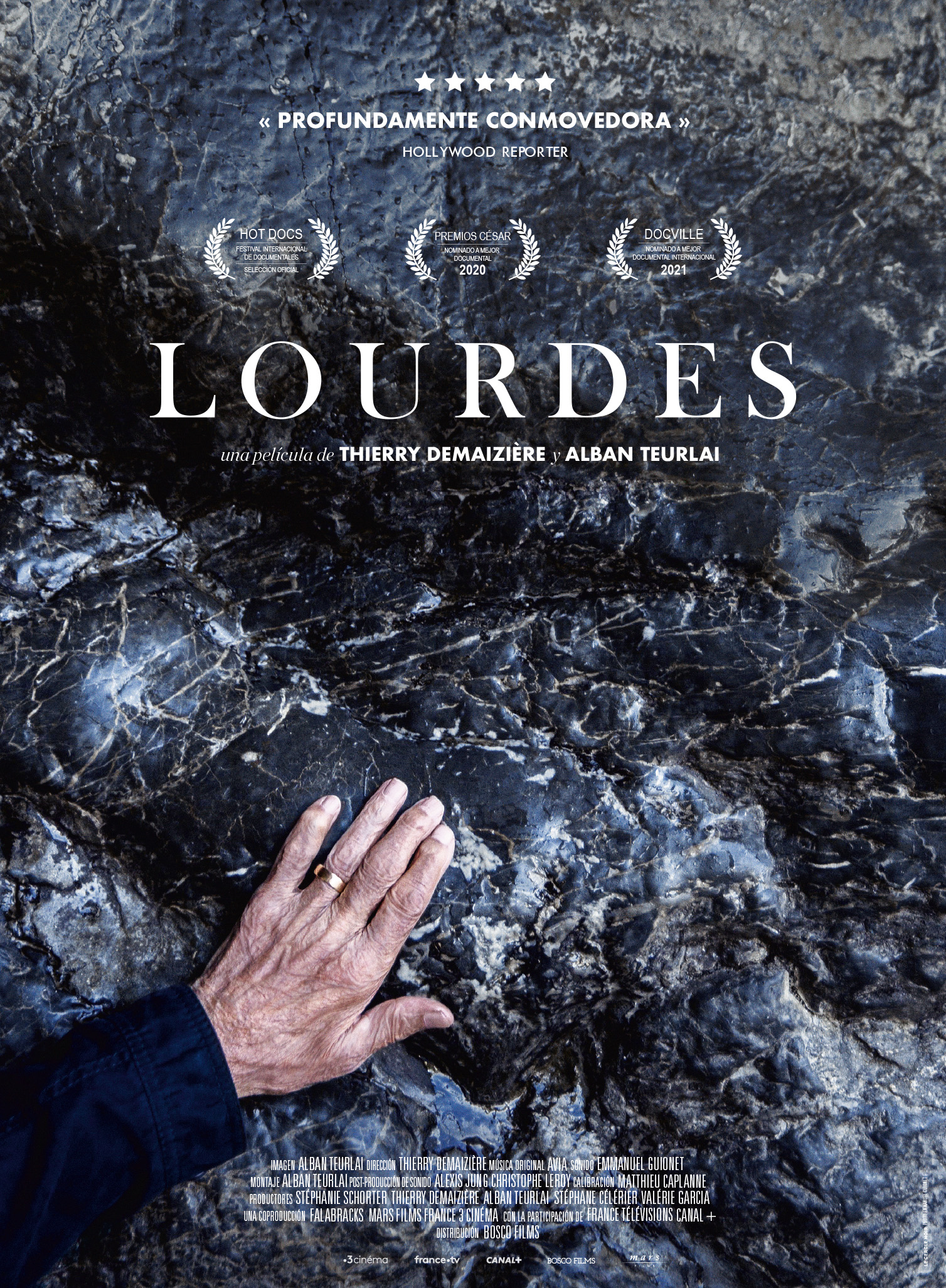Synopsis
The Lourdes grotto is touched by tens of millions of people who have left the imprint of their dreams, their hopes and their sorrows. It is a refuge for pilgrims who undress, in the literal sense of the word, when they get into the pools whose waters are considered by many to be miraculous.
Criticism
Lourdes | A tactile spirituality
Lourdes opens with a caress. With many, actually: dozens of hands caress the black stone of the grotto that supports the Sanctuary of Our Lady of Lourdes. This first sequence of the film is a declaration of intentions; with her the filmmakers Thierry Demaiziere Y Alban Terlai raise one of the keys to his film: the sense of touch. Or, going one step further, the mystique of touch.
A bit of context. In Lourdes, Demaizière and Teurlai follow a dozen pilgrims who come to the sanctuary nestled in the French Pyrenees looking for a refuge for their wounds. A father with two sick children, a girl who suffers from bullying, a man who cross-dresses and prostitutes himself on the streets of Paris… The film is a documentary, but there is no omniscient narrator in it who offers dates or data: the only ones voices we hear are those of its protagonists.
“We come to Lourdes because here we can be ourselves,” says another of the film’s protagonists, a man who suffers from an incurable degenerative disease. His story is interwoven with the others in a contemplative film and – I return to the beginning – eminently tactile. By this I mean that Lourdes it is built with hands: hands that lift wheelchairs, hands that support other arms.
Also the hands of a father holding on to his son’s stuffed animal. Those of a volunteer who lifts the sagging breasts of an old woman in her shower to relieve her. The ones about three friends who hug a room after she says her first word in months. Neither Demaizière nor Teurlai are believers, but in Lourdes they portray a profoundly Christian faith experience; that is, embodied.

“In Lourdes you see the same people who followed Jesus Christ 2,000 years ago: prostitutes, fishermen and cripples,” says another of the documentary’s protagonists, a member of a caravan of gypsy pilgrims. “People do not go to the sanctuary looking for a miracle, but to be seen as people,” the filmmakers point out in an interview published in the discussion.
Lourdes it’s an uncomfortable film, it generates a happy vibe inside. “The poor annoy us, they are an inconvenience to return to a more carefree life,” is heard in the documentary. I watched the documentary with my wife, and when we were halfway through, after having seen the deep faith of the pilgrims, and the selfless dedication with which they are treated, he challenged me: “Now we have the option of letting this film impact us or carry on as usual.”
LourdesIn short, it is a film that I recommend to everyone, although it is not a satisfactory film; the footage ends with hardly any of the stories reaching resolution. Many have beginning and knot, but no outcome. Perhaps, I think, it is an invitation for us, audiovisual pilgrims to the French sanctuary, to continue them. To embody, each one from his place and his circumstances, the restlessness and the Gospel.
Data sheet

- Original title: Lourdes
- Address: Thierry Demaizière, Alban Teurlai
- Screenplay: Thierry Demaizière, Jeanne Aptekman, Sixtine Léon-Dufour, Alban Teurlai
- Country: France
- Year: 2019
- Duration: 91 min.
- Gender: Documentary film
- Interpretation: (Documentary film)
- producer: Falabracks, Mars Films. Distributed in Spain: Bosco Films
- Music: Pierre Aviat
- Photography: Alban Teurlai
- Premiere in Spain: September 16, 2022

